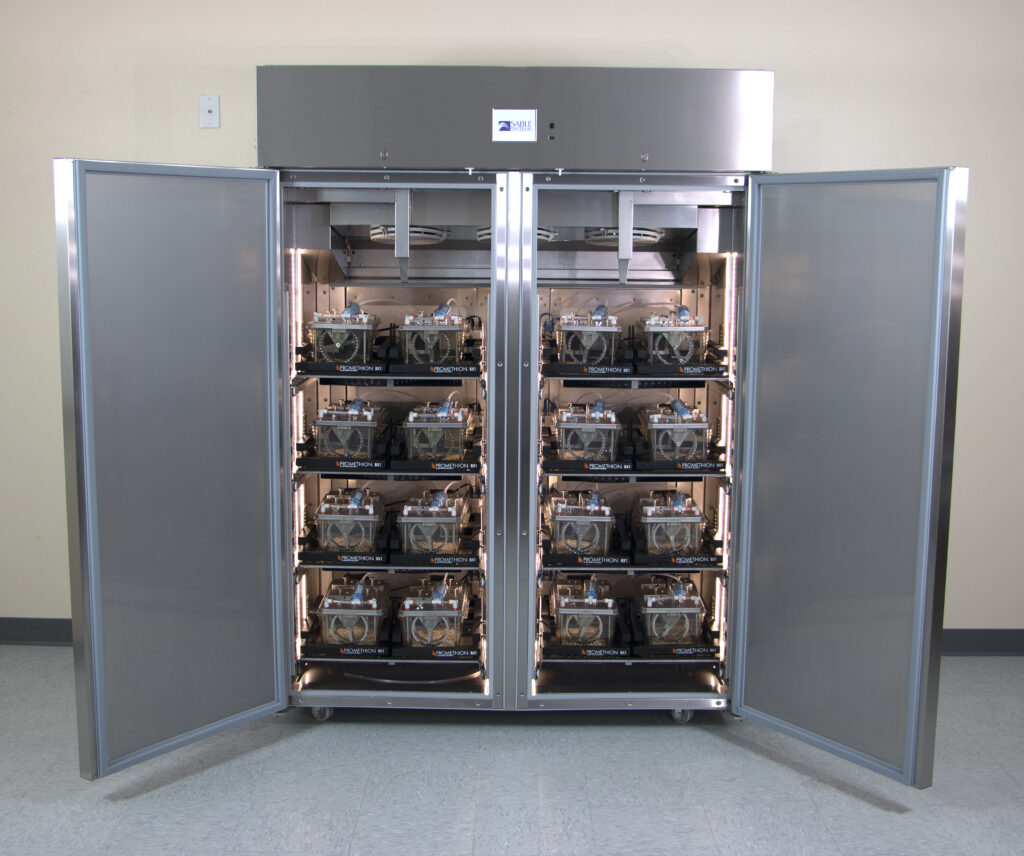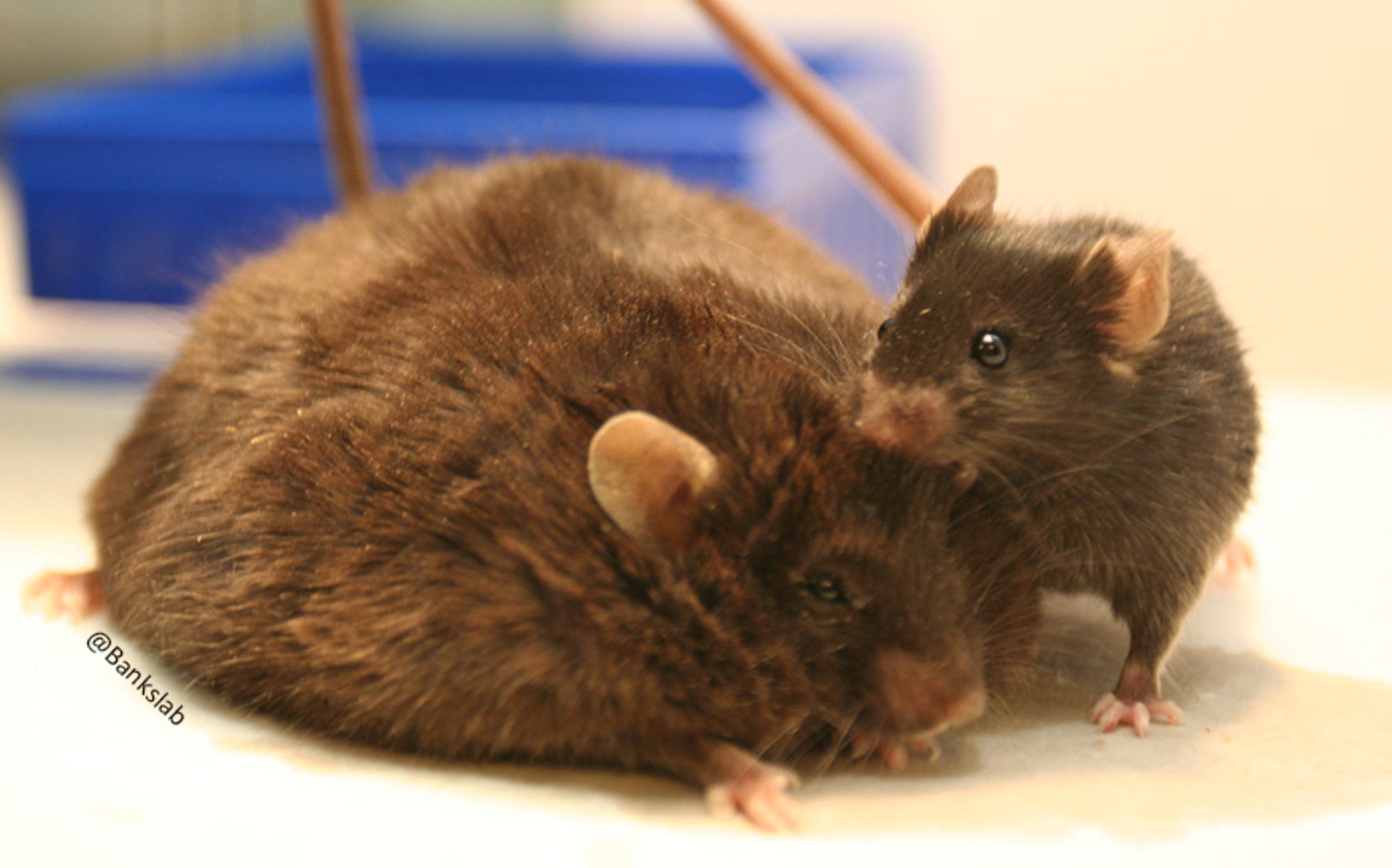Sable Systems Promethion indirect calorimeter (24 cages)
- food intake
- water intake
- in-cage body mass measurement
- physical activity (infrared beam breaks)
- energy expenditure
- oxygen consumption (VO2)
- carbon dioxide production (VCO2)
- respiratory exchange ratio – an indicator of carbohydrate or fat substrate oxidation
- wheels for voluntary running
- food access control gates for timed fast/feeding and pair feeding studies
- environmental temperature-controlled (4°C to 38°C)
- environmental light control for circadian studies (light/dark, dark/dark, dark/light)
- telemetry receivers to record body temperature and heart rate (DSI or STARR TELEMETRY)
- continuous glucose monitoring (DSI) for up to 8 mice
- isotopic analyzer to measure in vivo whole body oxidation rates of substrates (e.g. 13C-glucose or 18O-glucose) into 13CO2 or C18O2 for up to 8 mice
- sterile isolator cages for measurement of germ-free mice or with defined populations of microbes (gnotobiotic mice) in collaboration and coordination with the Massachusetts Host-Microbiome Center

Columbus Instruments CLAMS indirect calorimeter (16 cages)
- physical activity (infrared beam breaks)
- food intake
- energy expenditure
- oxygen consumption (VO2)
- carbon dioxide production (VCO2)
- respiratory exchange ratio – an indicator of carbohydrate or fat substrate oxidation
- voluntary wheel running
- environmental temperature-controlled (4°C to 38°C)
- environmental light control for circadian studies (light/dark, dark/dark, dark/light)
- telemetry receivers to record body temperature and heart rate (STARR telemetry bases)
- sterile isolator cages for measurement of germ-free mice or with defined populations of microbes (gnotobiotic mice) in collaboration and coordination with the Massachusetts Host-Microbiome Center

